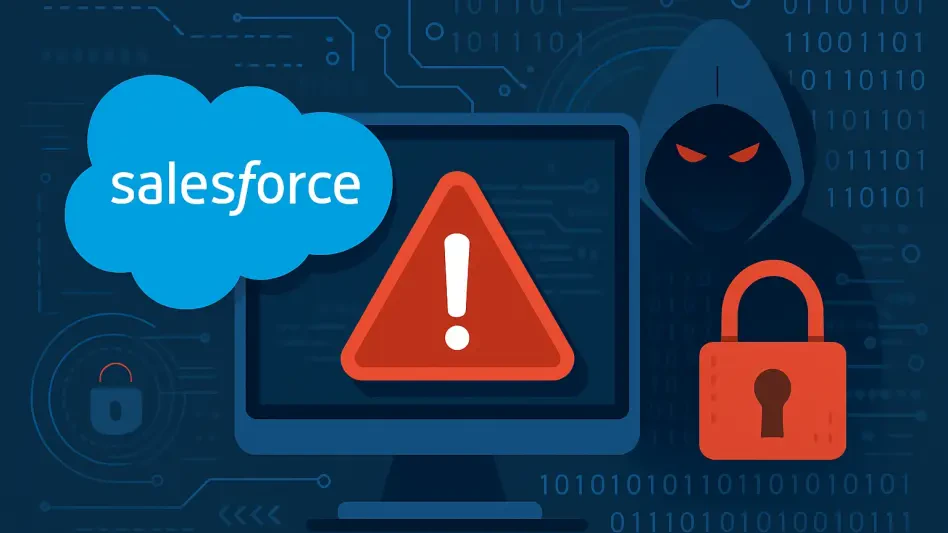The ever-evolving realm of cryptocurrencies presents both opportunities and formidable risks, making it crucial for users to understand the vulnerabilities in this digital landscape. Recent incidents highlight how human error and technological complexity continue to be exploited, leading to substantial financial losses. In particular, two cases on the Ethereum network have brought these issues to the forefront: one involved a trader inadvertently losing around $150,000, while another mistakenly transferred $100,000 to an incorrect address. These scenarios underscore the need for heightened awareness and caution, especially in navigating potential scams such as phishing transactions and history poisoning. As cryptocurrencies gain traction, the risk of falling prey to these scams remains inherent, necessitating an approach rooted in vigilance and digital sagacity.
Unraveling the Mechanics of Scams
Phishing Transactions and History Poisoning
Phishing transactions represent a sophisticated ploy where unsuspecting users are misled into signing deceptive contracts, unwittingly giving control over their wallets to malicious entities. The sheer ease with which such scams are executed poses significant concerns. In one notable incident, a trader’s mistake led to a substantial financial loss, with little recourse for recovery. History poisoning presents another insidious threat, where manipulative addresses infiltrate transaction histories and gain unmerited trust. The immediate and irreversible consequences of actions in a decentralized blockchain amplify the susceptibility to such scams, as users bear sole responsibility for their financial safety.
The complexity of Web3 environments exacerbates this issue, where swift actions on digital assets require meticulous management. A minor oversight can translate into devastating losses, given the absence of traditional support systems offered by banks, such as customer service or recovery methods. Unlike conventional banking, the decentralized nature of these platforms demands rigorous attention from users, who navigate their ventures with digital wallets and seed phrases. The susceptibility of average users to scams is further magnified by the technical intricacies involved, making it imperative to bolster user awareness through education.
Technical Challenges and User Responsibility
The decentralized blockchain ecosystem demands that users possess astute knowledge of technological norms and adoption protocols, which many find daunting. With no safeguard mechanisms akin to customer support, users must rely on their digital prowess while dealing with their assets. Symptomatic of a broader cultural issue within Web3, this milieu often instills misleading confidence, as individuals presume safety by virtue of managing their seed phrases. Alas, the dream of infallible protection eludes reality. Education on digital prudence is critical for equipping users to combat these scams effectively, ensuring that their ventures remain secure.
Data from recent months indicate an unsettling rise in attacks such as history poisoning and malicious batch transactions. A telling figure is the dozens of incidents reported in May alone, reflecting the urgent need for reinforced security measures. Fraudulent contracts often masquerade as legitimate services, replicated with compelling details, leading to a pivotal issue within cryptocurrencies—the false assurance of security. The user-hostile environment further complicates matters due to a lack of intuitive designs and standard verification processes. In sum, while Web3 platforms boast technological advancements, their accessibility for average users leaves much to be desired, emphasizing the importance of heightened vigilance and prescient caution.
Addressing Broader Implications
Cultural Shifts in Crypto Security
The burgeoning threat landscape within cryptocurrencies necessitates a transformative shift in safeguarding protocols and user awareness. Even as Web3 platforms evolve, the insecurities of human error remain a persistent challenge, and the crypto ecosystem must respond with adaptive strategies. Central to this endeavor is fostering a culture of digital prudence, where users are educated to discern potential pitfalls and navigate precautions with acuity. Technological sophistication alone cannot mitigate these risks; balanced user education and interface security innovations must coalesce to fortify defenses against the looming threat of scams.
The confidence ascribed to wallets and seed phrases often belies the reality of the digital domain, where a false sense of security can overshadow essential vigilance. User confidence requires a robust foundation of knowledge and awareness, preventing exploitable vulnerabilities from surfacing. Awareness campaigns, user-friendly designs, and security innovations should be integrated into cryptocurrency ecosystems, paving the way for a safer and more resilient financial frontier. Striking the delicate equilibrium between technological advancement and user protection should be a cardinal consideration as the digital realm continues its swift transformation.
Enhancing User Protection Strategies
Concerted efforts to enhance user protection hinge upon multifaceted initiatives that prioritize both education and technological safeguards. Intuitive interface designs should complement user knowledge, minimizing chances of inadvertent actions and maximizing security protocols. Implementing standard verification processes can serve as an additional layer of defense, ensuring users engage with trustworthy services. In tandem, educational initiatives should focus on cultivating digital prudence, fostering a mindset that values caution and discernment in transaction management. Responsive security measures must evolve hand-in-hand with technological innovations, offering users a comprehensive and dependable suite of tools to secure assets effectively.
As cryptocurrencies navigate their dynamic trajectory, these insights bear significance for shaping future considerations. The intersection of human error and technological vulnerabilities necessitates proactive approaches, balancing innovation with vigilance. By championing education-driven cultural shifts and reimagining security paradigms, the cryptocurrency realm can aspire to a horizon of growth unmarred by the persistent shadows of scams. Hence, embracing these strategic imperatives is imperative for ensuring that the financial promise of cryptocurrencies remains aligned with secure user experiences.
Future Thoughts on Crypto Vigilance
Phishing transactions are crafty schemes where unsuspecting users are tricked into signing misleading contracts, unknowingly granting control over their wallets to malicious parties. The ease with which these scams operate raises serious alarms. In one case, a trader’s error caused substantial financial loss, with little chance of recovery. Another threat is history poisoning, where deceptive addresses infiltrate transaction histories to gain unwarranted trust. The instant and irreversible nature of blockchain actions heightens vulnerability to these scams, as users are solely responsible for safeguarding their finances.
The intricate Web3 environments further complicate the management of digital assets. A tiny mistake can lead to catastrophic losses, especially with no traditional support systems like customer service or recovery options provided by banks. Unlike traditional banking, decentralized platforms require users to be extremely vigilant with digital wallets and seed phrases. The average user’s susceptibility to scams is increased by these technical complexities, making it crucial to enhance user awareness and education. Only through awareness can these threats be actively mitigated.








